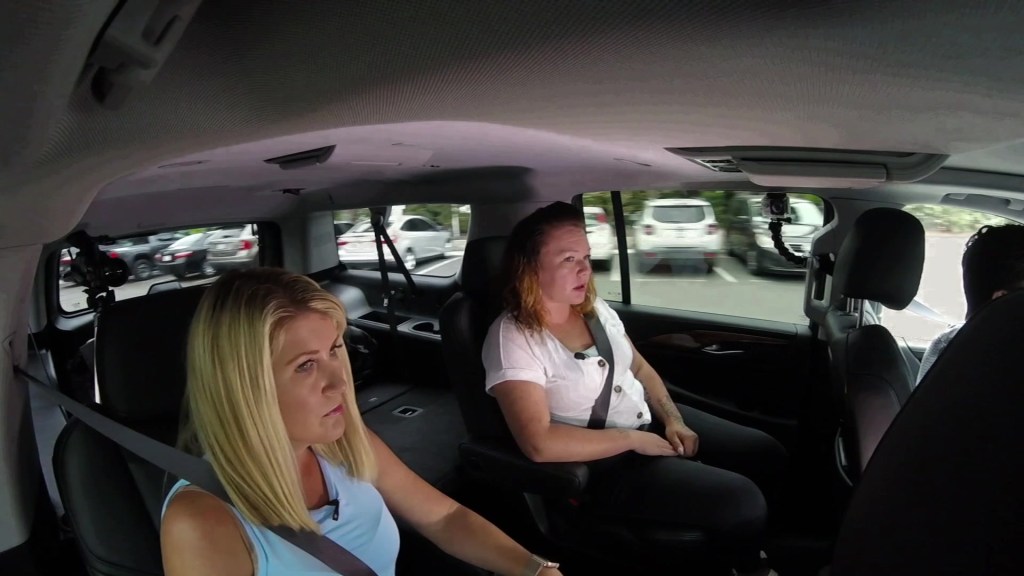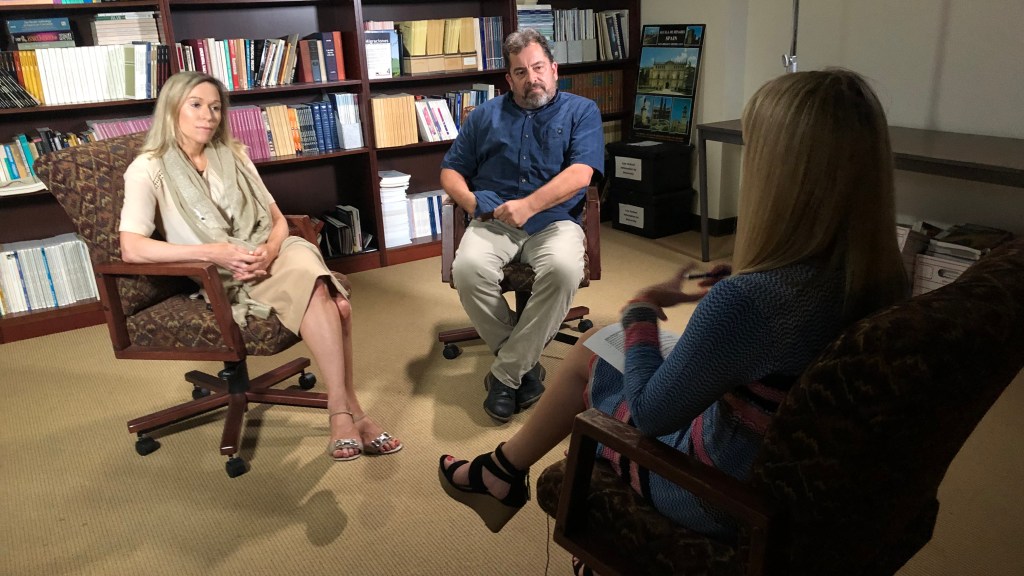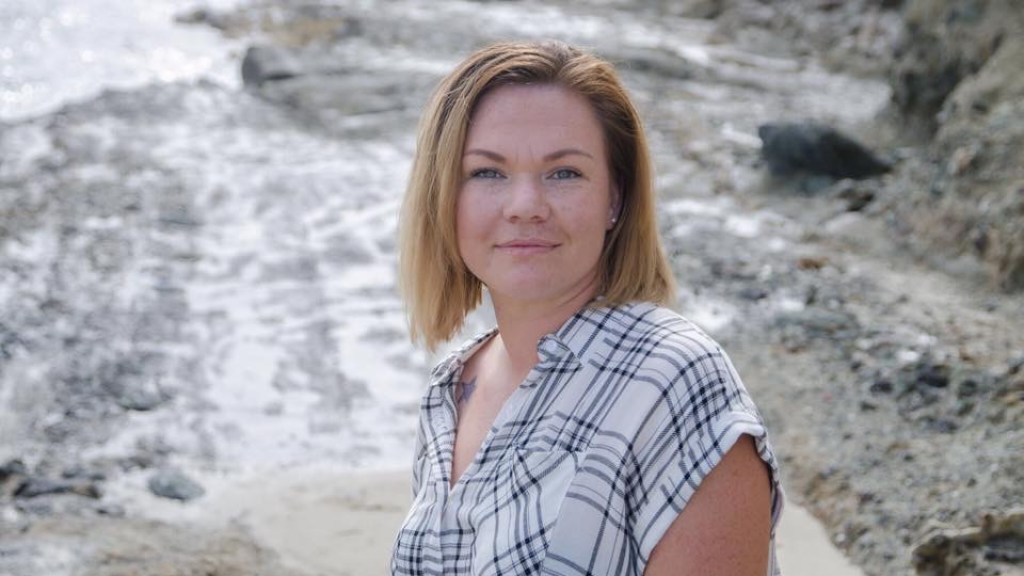“STOLEN” is a year-long NBC 7 investigation into the sex trafficking and exploitation of children in San Diego County. The seven-episode documentary series is told from the perspective of survivors, advocates -- even traffickers, and sex buyers, explaining the depth and scope of this problem in our communities and our schools. And with more children online during the coronavirus pandemic, experts say they are at greater risk of exploitation now more than ever. “STOLEN” celebrates the strength of survivors and their families, as they struggle to free themselves from the bonds of sex trafficking. See the full series here.
Jaimee Johnson stares outside the car window at the rows of hotels and resorts along Hotel Circle in San Diego. She looks at each hotel parking lot; the lobby, the long stretches of hotel corridors, as if each holds deep-seated and vivid memories for her.
They do.
“I think I’ve worked out of probably ten hotels in this area. The staff always knew which girls were working as prostitutes and they would put us in the same area, on the same floor because they know if you smoke weed or cigarettes that the smell would stay in that area. Also, they knew where to direct the cops if they were called.”

Johnson spent more than six years in a life of prostitution and exploitation in San Diego County. She now works to help others who are trapped in a life of sex trafficking, offering them hope for a future free from their traffickers. And, her work is more important now than ever.
Fueled by the rise of social media, and the coronavirus pandemic that sent vast numbers of children online for virtual learning, more and more young people in San Diego and throughout the country are at risk of being groomed and recruited by sex traffickers. At the same time, law enforcement is prosecuting more traffickers throughout San Diego County and the nation.
Leaders say San Diego County is not immune to this growing problem.
THE NATIONAL SCOPE
While the exact numbers of those trafficked, and those who exploit them are difficult to track, national data shows the number of victims and exploiters is on the rise.
In a podcast episode of "Into San Diego," NBC 7's Monica Dean and Tom Jones discuss how they found evidence of exploitation happening on San Diego County school campuses and a specific moment they experienced on a ride-along with survivor Jaimee Johnson. Listen to the podcast below.
In 2017, the Polaris Project -- a nonprofit that focuses on awareness and prevention of trafficking and exploitation in North America -- found 9,000 cases were reported to the National Human Trafficking Hotline and BeFree Textline in 2017—a 13% increase from the previous year. According to data from the Bureau of Justice Statistics, the number of human trafficking defendants increased by 80 percent from 2000 to 2015.
According to data from the Bureau of Justice Statistics, the number of human trafficking defendants increased by 80 percent from 2000 to 2015.
Numbers from the state department show that referrals to law enforcement increased by 82 percent in the four years from 2011 to 2015.
The data is especially staggering after considering that in 2001 the FBI estimated that as many as 300,000 children are victims of sex trafficking in the U.S. each year. The numbers have undoubtedly increased
THE LOCAL SCOPE
In San Diego County, young girls, and boys who are trafficked for sex hide in plain sight. They can be seen on public streets, in online chat rooms and message boards, and inside classrooms in nearly every school district in San Diego County.
“We are a hot spot in San Diego for multiple reasons. We're a military community so there are lots of people coming in and out,” said Johnson. “We are also a rich community. We have a lot of money out here. We are a melting pot. So we have a lot of foreigners coming here and a lot of tourists coming here.”
Dr. Ami Carpenter, a professor at the University of San Diego, is an expert in the field of commercial sex trafficking in San Diego County.
Through their research, Carpenter, and co-author Dr. Jamie Gates of Point Loma Nazarene University found thousands of people are trafficked for sex in San Diego County each year.
“At the time of our study, we estimated approximately 3,000 people were trafficked in San Diego County,” said Gates. “Now, that number may be as high as 8,000.”
The Carpenter-Gates Study found that the illicit and illegal sex industry in San Diego County accounted for $810 million in the hands of traffickers and sex workers in 2016. The same study estimated that sex traffickers in San Diego make on average $670,625 a year collectively.
As part of their study, Carpenter and Gates looked at the prominence of sex trafficking at school districts throughout San Diego County.

“It surprised us all, that the level of recruitment and the geographic spread of the recruitment as far and wide as it is,” Gates told NBC 7.
Just how many school districts were impacted in San Diego County was a mystery. The schools that participated in the Carpenter and Gates study only agreed to take part if they could remain anonymous.
But for the first time, NBC 7 Investigates obtained information on the scope of exploitation reports in schools across San Diego County.
Through a public records request to San Diego County’s Child Welfare Services, the data obtained revealed some startling information.
Starting in 2016 calls to San Diego’s Child Abuse Hotline reporting the Commercial Sexual Exploitation of Children (CSEC) tripled from 50 calls in 2016 to 152 the following year, a 200 percent increase year to year. Reports dropped slightly to 129 calls in the 2018-2019 school year.
San Diego County officials would not release information on a school-level, rather only by the district-level. Officials said they didn’t want to potentially identify victims, or mandated reporters but identifying specific schools where reports came from. Instead, county officials released the number of reports in each school district, from 2016 to 2019.
The records reveal that nearly every school district has reported potential CSEC cases. To see a breakdown of school district reports, look below or click here.
Overall, public records reveal tips to the CSEC abuse hotline in San Diego County increased by 700 percent since 2014.
Charisma de Los Reyes worked as a policy analyst for San Diego’s Child Welfare Services, she also served as the county’s program coordinator for a member for the Commercial Sexual Exploitation of Children’s team. De Los Reyes believes the rise of social media and technology has contributed to the rise in sex trafficking.
“Whether it is someone recruiting, or baiting, or grooming children, many times they're reaching out to them online,” said de Los Reyes.
And that, according to de Los Reyes, presents problems as to finding the real numbers of those trafficked.
“I am confident that this is much more widespread than maybe you know what any study could capture.”
So why is sex trafficking such a problem for San Diego County?
A combination of factors said San Diego County District Attorney Summer Stephan.
“We’re a big city with freeway access, hotels, tourism; people can move from town to town,” says Stephan.
Stephan said there’s another factor: Gangs.
“Gang affiliation brings in another layer of fear, coercion, and a feeling from many of the victims that they are trapped and unable to escape,” said Stephan.
Johnson and other advocates also believe that the military may play a role in the trafficking economy in San Diego County.

“I would say about seven out of ten of my clients were military, maybe six,” Johnson told us on our ride-along.
One study by the Fordham University School of Law found a connection between U.S. military bases overseas and sex trafficking economies operating around those bases. It concluded the issue has faced “considerably less scrutiny than it deserves.”
According to records obtained through a Freedom of Information Act request, NCIS - the division of the Navy and Marines tasked with investigating crimes by military officers - filed prostitution or trafficking-related charges against members of our military in 19 cases since 2014.
Brian O’Rourke, a spokesperson for the U.S. Navy told NBC 7, “The solicitation of prostitution and human trafficking are clear violations of the Uniformed Code of Military Justice and contrary to the Navy's core values. We take these issues very seriously, Navy-wide and in San Diego."
Sex trafficking-survivor now victim advocate Jaimee Johnson says putting an end to sex trafficking is no easy task.
“The problem with exploitation is that there's not always a pimp but there's always a buyer. So if we're not focusing on the buyer and we're not focusing on how do we stop people from buying we're never gonna put even a slight dent in this.”

